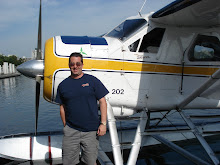
Tom Campbell Black was a famous English aviator. He was the son of Alice Jean McCullough and Hugh Milner Black. He became a world famous aviator when he and C.W.A. Scott won the London to Melbourne Centenary Air Race in 1934.
Tom Campbell Black attended Brighton College and the records for the period summer 1915 to summer 1917 indicate that he entered Hampden House, May 1915, was appointed House Prefect, January 1917 and played Second XI Football, 1915 to 1916 and 1916 to 1917. Campbell Black attended Army Class II and entered the RN College at Greenwich and attained a commission in the R.N.A.S. (Naval Air Service). He served first as a pilot in the Naval Air Service and later in the RAF during the Great War, rising to the rank of Captain. Arriving in Africa as a soldier settler in 1922, he joined his brother, Frank Milner Black, who had been stationed as a soldier in Kenya and decommissioned in 1920.Black family history has it that Tom and his brother managed a coffee plantation in British East Africa, in the 1920s. Their farm was between the towns of Rongai and Eldama Ravine, in the Rift Valley, about 110 miles (180 km) northwest of Nairobi. Tom was a noted horseman who was an award-winning show jumper, winning a competition in 1925. He later bred and raised race horses, which remained a passion of his throughout his life.
It is stated in the Shuttleworth Collection Records, England, that an aircraft currently in their collection, a de Havilland DH.51, was built in 1925 and shortly after John Evans Carberry bought and shipped it to Mombasa. The DH.51 first flew in Africa on 4 April 1926. In June 1928, Tom Campbell Black, G. Skinner and A. Hughes bought the aircraft and on 10 September 1928, it became the first aircraft to be registered in Kenya. Named Miss Kenya, it was first registered G-KAA, but with the change in the registration system, it was re-registered VP-KAA.
After flying with Campbell Black in February 1929, Mrs. Florence Kerr Wilson was encouraged by his enthusiasm to form Wilson Airways Ltd., in Kenya. At inception later in the same year, her airline possessed a single Gypsy Moth aircraft, primarily piloted by Campbell Black. The airline grew into a comprehensive air carrier across Kenya. Captain Hugo Dunkerley, the Editor of Aeroken and the Special Correspondent of the East African Standard, accompanied Campbell Black in the first flight from Nairobi to Mombasa and back in a single day, on 21 November 1929. He also accompanied Tom on a round flight, Nairobi, Dar es Salaam, Mombassa and back to Nairobi in just over nine hours, in November 1930. Tom Campbell Black was the Managing Director/Chief Pilot of Wilson Airways, but in March 1932, he resigned from Wilson Airways and left Kenya to take up an employment offer made by Lord Marmaduke Furness, a renowned horse breeder, to be his personal pilot and live back in England.
While the company was profitable, Wilson Airways was disbanded in 1939 with the outbreak of the Second World War.
In 1934, Campbell Black and Charles W.A. Scott were entered in the London to Melbourne Air Race, officially known as the "MacRobertson Air Race". Recorded as Captain T. Campbell Black in the starters list for the race, Campbell Black and C.W.A. Scott won the "Speed Section" of the race in an extraordinary time of 71 hours, and won the First Place Prize of 10,000 pounds. They also won the "Handicap Section" but the race rules didn't allow them to win the two sections. Black and Scott were awarded "The Britannia Trophy" by the Royal Aero Club, England, presented "For the British Aviator or Aviators accomplishing the most meritorious performance in aviation during the previous year."
On the 19th. September 1936 Flying Officer Peter Stanley Salter who was the Assistant Adjutant and Chief Flying Instructor of No. 611 Squadron collided in his Hawker Hart No. K3044 with the Percival Mew Gull G-AEKL piloted by Mr. Tom Campbell Black whilst taxiing on aerodrome after landing resulting in the death from his injuries of Mr. Tom Campbell Black as he was waiting to take off.
















